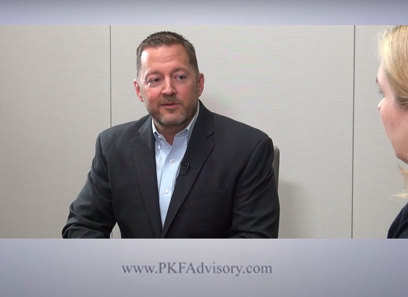What to Expect from M&A Outlook in 2025: Predictions and Market Insights
What to Expect from M&A Outlook in 2025: Predictions and Market Insights
Blog Article
The Effect of Mergers and Acquisitions on Market Characteristics and Competition
The landscape of acquisitions and mergers offers an intricate interplay in between fostering growth and potentially threatening affordable integrity within markets. As business pursue tactical positionings to enhance efficiency and technology, the ramifications on customer choice and market rates warrant careful analysis.
Summary of Mergers and Acquisitions
Mergers and procurements (M&A) play a crucial function in forming the landscape of modern company, as companies look for to improve their one-upmanship and accomplish calculated purposes. M&A transactions entail the combination of firms or assets with numerous monetary transactions, consisting of mergings, where 2 companies combine to create a brand-new entity, and procurements, where one company acquisitions another outright. These tasks are driven by a myriad of aspects, such as the search of harmonies, diversity of item offerings, and the wish to go into brand-new markets.
The M&A procedure generally involves numerous stages, including calculated preparation, due persistance, arrangement, and assimilation (Emerging Market Opportunities). Companies carry out complete evaluations to determine prospective targets that straighten with their growth techniques and evaluate the financial and operational ramifications of a purchase. Regulative factors to consider also play a crucial role, as antitrust laws are designed to stop monopolistic practices that might hurt competition
As organizations browse the complexities of M&A, the results can considerably influence stakeholders, consisting of workers, clients, and shareholders. Consequently, recognizing the dynamics of M&A is essential for reviewing their effects within the wider context of market actions and competitive positioning.
Favorable Results on Market Dynamics
The loan consolidation of companies through purchases and mergers can lead to significant positive impacts on market characteristics. This effectiveness can convert into reduced rates for customers, promoting a more affordable market setting.

Moreover, enhanced market share arising from mergings can give firms with greater negotiating power with distributors and suppliers, assisting in improved terms and conditions that can profit the overall supply chain.
Adverse Repercussions for Competitors

Furthermore, the elimination of competitors via purchases can stifle advancement. When principals merge, smaller firms may have a hard time to complete, causing a homogenization of product or services. The resultant lack of competition can create a setting where continuing to be business have much less reward to purchase r & d.
Moreover, mergings can create barriers to entrance for brand-new firms, as the joined entity may leverage its boosted resources to dominate the marketplace. This can discourage possible participants, thus limiting competition and technology in the long term.
Ultimately, while purchases and mergers can use tactical benefits, their prospective to undermine competitors necessitates mindful consideration of check my blog their wider effects on the market dynamics. The equilibrium in between growth and affordable honesty remains a vital concern in assessing such business approaches.
Regulatory Considerations and Oversight
Regulatory structures play an important duty in forming the landscape of mergers and acquisitions, guaranteeing that market characteristics remain reasonable and competitive. These structures are developed to stop anti-competitive behavior and to protect customer interests. Regulative bodies, such as the Federal Trade Payment (FTC) in the United States and the European Commission in the EU, review suggested procurements and mergers based upon their possible impact on competition within the marketplace.
The assessment process involves a detailed examination of the market share, capacity for monopolistic methods, and the overall financial implications of the purchase. Regulatory authorities often impose conditions or need divestitures to reduce concerns over minimized competition, guaranteeing that the merged entity does not dominate the marketplace unfairly.
Additionally, transparency is an essential component of regulatory oversight. Stakeholder involvement, consisting of public consultations, permits varied point of views to be taken into consideration in the decision-making procedure. This joint method helps to foster a balanced governing setting that promotes advancement while safeguarding competitive techniques. Inevitably, efficient regulative factors to consider are important in maintaining market stability and motivating healthy and balanced competitors when faced with progressing organization landscapes.
Study and Real-World Instances
Regularly, case research studies of noteworthy mergings and purchases highlight the extensive impacts these transactions can have on market dynamics. The 2000 merger in between AOL and Time Warner functions as an archetype, where the prepared for synergies failed, resulting in a drastic decline in shareholder value. This case emphasizes exactly how cultural imbalances and overestimation of market possibility can interrupt competitors.
In comparison, the procurement of WhatsApp by Facebook in 2014 exhibits a successful combination that improved the interaction landscape. Emerging Market Opportunities. Facebook leveraged WhatsApp's customer base to improve its service offerings, effectively increasing its market supremacy while preserving competition in the messaging market
An additional significant instance is the merger of Exxon and Mobil in 1999, which produced among the world's biggest oil look at more info firms. This debt consolidation led to greater efficiencies however raised issues about minimized competition in the power market, triggering regulative analysis.
These examples highlight the intricate interaction in between purchases and mergings and market characteristics, showcasing both the potential benefits and risks that can develop, eventually shaping competitive landscapes throughout markets.
Verdict
Mergers and procurements play a pivotal function in forming market characteristics and competitors. Efficient governing oversight is crucial to ensure that the advantages of M&An activities are made best use of while minimizing negative influences on market competitors.
One major concern is the possibility for reduced market competition, as mergers typically lead to the debt consolidation of market power amongst less players. Governing bodies, such as the Federal Profession Commission (FTC) in the United States and the European Commission in the EU, assess proposed mergers and purchases based on their possible influence on competition within the market.

Mergers and purchases play a critical function in forming market dynamics and competitors. Reliable governing oversight is important to make sure that the advantages of M&A go to website tasks are optimized while reducing negative effects on market competition.
Report this page